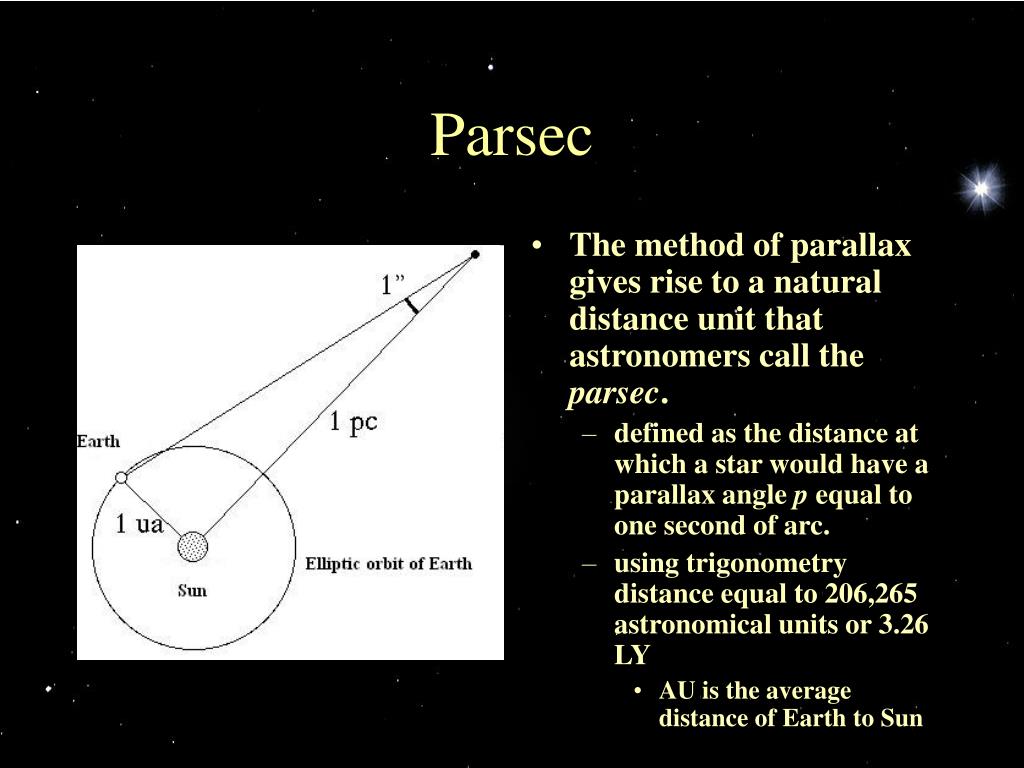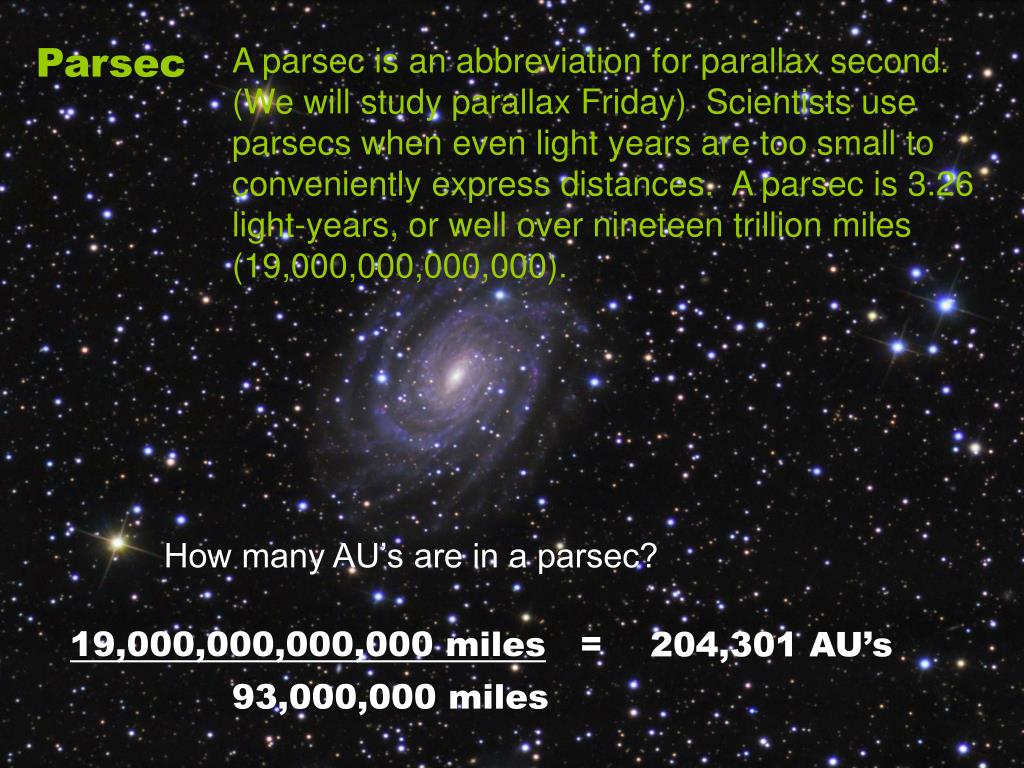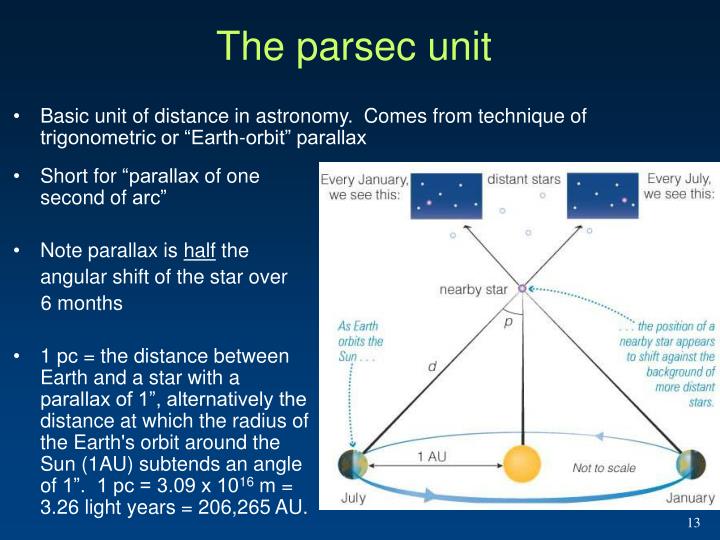

And one parsec is the distance of a star that has a par allax angle of one arc sec, hence the name “parsec.” To find the actual distance of one parsec we may use the formula above.ĭ = 92,955,807.3 miles / tan (1/3600 degrees) = 19,173,511,582,127 mi * 1LY/5.88 trillion miles = 3.26 LY.ĭ = 1AU / tan (1/3600 degrees) = 206,265 AU * 1LY/63,115 AU = 3.26 LY This is because the degree to which stars are shifted is incredibly small. Trigonometric parallaxes are measured in units of arcsecs and parsecs. This can then be used to calculate the distance: d = 1 AU / tan (p). In this case, the opposite side from (p) is 1 AU and the adjacent side from (p) is the d - the distance to the nearby star. In the image above, it can be seen that: tan (p) = 1 AU / d. Because we know the distance between the Earth and the Sun (1 AU or ~93 million miles), and the angle of the given star relative to straight up, we may use the tangent function to calculate the distance (tan = opp/adj). Using observations of a star six months apart, we may find the parallax angle. However, distances to stars closer than 100 parsecs can be calculated with ground-based telescopes. Any stars farther than ~100 parsecs (326 LY) have parallax angles too small to measure from the surface of the Earth with this technique. We may use trigonometric functions to calculate the distance of relatively close stars, using more distant stars as a fixed background. The same principle can be applied to astronomical bodies. The distance your thumb appears to move is directly related to how far apart your eyes are.

When you hold your thumb out in front of your face and alternate opening and closing each eye, the position of your thumb moves, while the background appears to stay fixed. Parallax refers to the apparent change in the position of a given object depending on the observer’s line of sight, with respect to more distant “stationary” objects. The trigonometric parallax is a method to discern a star’s distance from Earth. Largely regarded as an unremarkable subject of math today, trigonometry once revolutionized our species’ scientific capabilities, and unknown to most, continues to do so. Trigonometry, the study of relationships between side lengths and angles of triangles, is a branch of mathematics dating as far back as 5,000 years ago.

From the first applications of astronomical trigonometry in Babylon, Egypt, Greece, or ancient Islam, to the precise astrophysical calculations used by astronomers in modern-day society - the human race has unremittingly pursued our cosmic address. Understanding Earth’s place in the universe has been a question in the minds of humans for millennia.


 0 kommentar(er)
0 kommentar(er)
